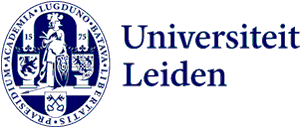60 search results for “human origins” in the Public website
-
prehistoric fire use: ‘Variation in fire conditions equals variation in human behaviour’
Building a fire involves many variables, such as size, choice of fuel, temperature, and burn time, that affect the way the generated heat can be used, and therefore the potential function of a fire. A group of Leiden archaeologists are, together with a team of international colleagues, investigating…
-
Digging into stone age secrets
Archaeologist Dr Gerrit Dusseldorp's research project was covered by a South African newspaper. Dusseldorp and his team investigate the evolution of human behaviour through artefacts dug up in South African caves.
-
Archaeologist Andrew Sorensen on Dutch TV on prehistoric BBQ
The Dutch TV programme Keuringsdienst van Waarde investigated the origin of BBQ taste. Prehistoric fire expert Andrew Sorensen was invited to explain prehistoric fire making techniques.
-
Three new professors in Archaeology
At the Faculty of Archaeology, three new professors are appointed with effect from February 1, 2018. They are Ann Brysbaert, Marie Soressi, and Joanita Vroom. How do they react to their appointments, and what will be their foci in the following years?
-
Andrew Sorensen receives Veni for continuation of prehistoric fire-making research
In 2018, Sorensen’s research into the fire-making habits of the Neanderthals reached the headlines all over the world. Now, a Veni grant will enable him to continue his fire-related investigation, focusing more on our own distant ancestors.
-
New research indicates Hunter-Gatherer impact on prehistoric European landscapes
The starting point of human-induced landscape changes has been under permanent debate. It is widely accepted that the emergence of agriculture strongly increased human impact on their environments. However, foragers can and do actively transform land cover and ecosystems. Ethnographic observations,…
-
Simulating the prehistoric use of fire through computer models
Archaeologists often use the percentages of heat-affected stone or bone artifacts found at archaeological sites as a way to determine how frequently fire was used by the inhabitants. Andrew Sorensen and Fulco Scherjon have come up with a computer model called 'fiReproxies' to simulate how fires used…
-
Gerrit Dusseldorp joins Liveable Planet Interdisciplinary Programme: ‘Archaeologists can provide the time-depth perspective’
With the retirement of Wil Roebroeks, Gerrit Dusseldorp will take his place as the archaeological representative in the Liveable Planet Interdisciplinary Programme as an Associate Professor. An expert on the behaviour of early human hunter-gatherers, he will look at the interaction between humans and…
-
Fire in Human Evolution
Conference
-
Neandertal genome from Les Cottés site sequenced
On March 21 2018, a study was published in Nature, co-authored by Professor M. Soressi from the Faculty of Archaeology of Leiden University, announcing the sequencing of five new Neandertals, raising the number of high-coverage sequenced Neandertals from two to seven. A tooth lost by a Neandertal woman…
